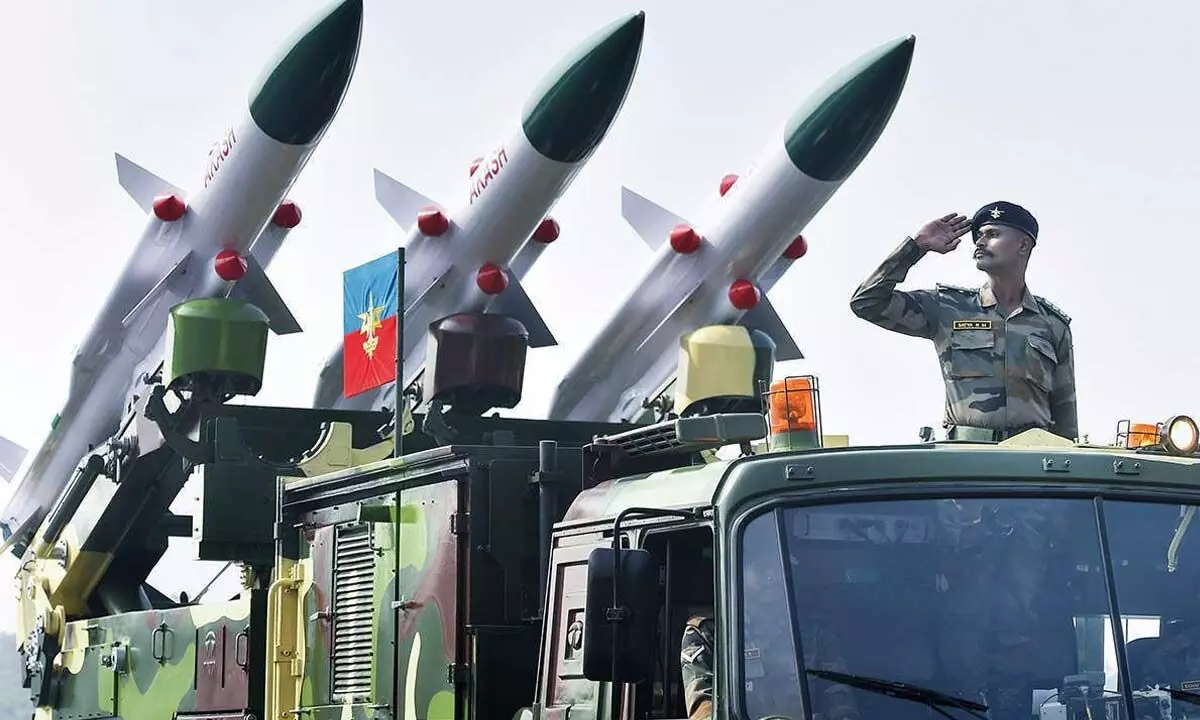Indian defence needs self-reliance and deeper research to ensure strategic autonomy
In the last six years, expenditure on R&D by DRDO is way below what developed countries spend
image for illustrative purpose

Elaborating on the global geopolitical turmoil, he pointed out that Japan, the UK, Russia, China, Germany, Poland, South Korea, among others, are significantly increasing their defence budgets. This could lead to a huge disruption in the global supply chains of military hardware. However, the situation provides a wonderful opportunity for Indian defence manufacturers to seize the initiative. Moreover, there is a huge demand for military equipment and hardware not only in Asia but also across Europe
India's economic growth, democratic and inclusive governance, and the ability to stand up to coercion and intimidation to defend its territory are among the factors contributing to the rise of its comprehensive national power, said Chief of Defence Staff General Anil Chauhan.
In an address at a think-tank, he pointed that achieving self-reliance in the defence sector and reducing import dependency for military hardware is important for the country to maintain its strategic autonomy and shoulder new responsibilities commensurate with its emerging stature.
The 2023-24 Budget has been silent on indigenization whereas last year the Union Finance Minister had announced that 68% of defence procurement will henceforth be from indigenous manufacturers.
Now speaking in Bengaluru on February 15, she said that the Centre will earmark 75% of defence procurement budget for the domestic industry. The move will throw open Rs one lakh crore in defence contracts for Indian private and public sector defence companies in the new fiscal. However, for this to happen, the production capacity of domestic industry (DPSUs and private sector) has to increase significantly.
In order to deeply entrench the indigenization drive of weapon systems and equipment, the focus on R&D in defence also has to improve. In the last six years, expenditure on R&D by DRDO, the primary research agency for defence, has remained between 0.08% and 0.09% of GDP. This is too low as noted by the Standing Committee on Defence (2021) and way below what developed countries spend. The total national spend on R&D has to go up to at least 1% of the GDP, for the success of indigenization policy in defence. Innovation has to be given a further boost through start-ups eco system, IDEX and DTIS schemes and collaboration with academia.
It has been noted that budget allocation for defence falls short of the resource projection every year. For the current financial year 2023-24, out of the defence budget allocation of Rs 5.94 lakh crore, revenue expenditure on salaries, operational maintenance of forces (stores, spares and repairs) along with pensions is Rs 4.08 lakh crore, which is 68.7% of the defence budget. Capital outlay of Rs 1,62,600 crore forms just 27.4% of the defence budget. The remaining allocation is towards border roads, research and administrative expenses. It is the capital outlay which is relevant for modernisation of forces and a cause of concern as evident from the figure below.
The Standing Committee on Defence (2018) had noted that modern armed forces should have one-third of its equipment in the vintage category, one-third in the current category, and one-third in the state-of-the-art category. However, Indian army had 68% of its equipment in the vintage category, 24% in the current category and 8% in the state-of-the-art category. The committee also noted that over the years, the army has accumulated a substantial deficiency of weapons, stores and ammunition. It found that adequate attention has been lacking with respect to both policy and budget for modernising the near-obsolete armoury.
The armed forces depend heavily on foreign OEMs (original equipment makers) for military hardware and such a situation is not sustainable in the emerging geo-political environment," Gen. Chauhan said.
Elaborating on the global geopolitical turmoil, he pointed out that Japan, the UK, Russia, China, Germany, Poland, South Korea, among others, are significantly increasing their defence budgets. The situation could lead to a huge disruption in the global supply chains of military hardware. However, this situation provides a wonderful opportunity for Indian defence manufacturers to seize the initiative. Moreover, there is a huge demand for military equipment and hardware not only in Asia but also across Europe. In such a situation, indigenous defence ecosystem is the safest bet as it guarantees assured supplies.
The space domain will percolate and have its effects across all other domains of warfare,” A.C.M. Chaudhari said, dwelling upon how the Indian armed forces transitioned from depending on the high-altitude MiG-25 “Foxbat” aircraft for “strategic reconnaissance” in the 1980s and 1990s to space-based assets like satellites now.
Similarly, citing the examples of the US and French air forces, he said the IAF will also have to transform from “air-power” to “aerospace power” in the years ahead.
“In the future, the IAF will be called upon to take part in space situational awareness, space denial exercises or space control exercises,” he said.
The US, too, has a full-fledged space force as a distinct branch of its armed forces. In contrast, India still does not have an Aerospace Command, having created just a small tri-service Defence Space Agency in 2019 after much dithering.

